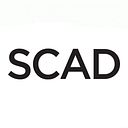Lubomir Kocka: Reading Creatively
“I was born a visual storyteller,” says film and television professor Lubomir Kocka. “I inherited that quality from my grandfather, who was a painter and a priest. The frescos he painted almost a hundred years ago are still in churches in Vojvodina, Serbia. The Biblical stories he narrated launched my imagination.”
Growing up in the former Czechoslovakia, Kocka (pronounced COAT-ska) was driven to improve his reading skills by his parents, who emphasized the relevance of literacy to artistic pursuits. “So I read everything, even the Communist newspaper Pravda.”
In addition to being a lauded director of feature films and television series, Kocka is the author of the new book Left or Right? Directing Lateral Movement in Film (Vernon Press, 2020). For his Reading Creatively selections, he reflects upon works that comprise his own formative “firsts.”
Pavol Dobsinsky, David L. Cooper (ed., transl.), Traditional Slovak Folk Tales (Routledge, First American Edition, 2001). “My first encounter with literature, and the first bedtime stories my father read to me, and that I later read to both my sons, along with Grimms’ Fairy Tales and Hans Christian Andersen’s Fairy Tales. Along with radio dramas and children’s vinyl LP records, these tales significantly influenced my visual thinking and storytelling skills.”
Edgar Rice Burroughs, The Return of Tarzan (A.C.. McClurg, 1913). “The first book I read multiple times. Up to that point, when reading a book and nearing the end, I slowed down because I did not want to leave the characters. My father told me, ‘If you want to meet a novel’s characters again, you can start reading the book again.’ Such a liberation! I still reread great books today.”
Norman Mailer, The Naked and the Dead (Rinehart & Company, 1948). “A foot soldier in a platoon is walking through bushes when he gets his foot stuck in the branches of a shrub. But when he tries to pull it out, he realizes that his foot is trapped in the rib cage of the dead enemy. This journalistic visual detail left an unforgettable impression on me. This was the first book where I realized the power of visual writing, and how a literary detail can be comparable to a close-up in film.”
E. R. Braithwaite, To Sir, With Love (Bodley Head, 1959). “The first book I read after seeing the film, Braithwaite’s novel tells the story of a dedicated Black teacher who deviates from the standard curriculum to discuss issues with his students like poverty, sex, love, and death, while slowly breaking down the barriers of racial prejudice. I don’t remember how many times I saw the 1967 film starring Sidney Poitier in the movie theater, crying each time. Reading the book, I cried again. That was the first time I realized a written story can be interpreted differently by a screenwriter or director.”
George Orwell, Nineteen Eighty-Four (Secker & Warburg, 1949). “Orwell’s dystopian political science fiction classic was the first samizdat I read. Living in a socialistic country with a real experience of violations of freedom of expression, the cult of personality, and culture of survival did not make me feel that I was reading something unique. I felt like I was living it.”
John Irving, The World According to Garp (E.P. Dutton, 1978). “The first book I read after surviving a helicopter crash while scouting locations for Mountain Rangers, a TV series I directed. Laid up in the hospital with two broken vertebrae, I was visited by my friend, the screenwriter Zura Krizkova, who told me, ‘It was not your time to die, and it is not time to be gloomy, you have to read this book.’ I was in no mood to laugh, but I read it in one breath.”
Lubomir Kocka’s new book, Left or Right? Directing Lateral Movement in Film, is the work of a creator and educator who has dedicated his life to the art of storytelling. The book includes a chapter-length contribution from fellow SCAD film professor Stephen Stanley on LGBTQ+ film. Learn more about the book at the official Vernon Press page, and from this brief talk by the author himself.
By Peter Relic
